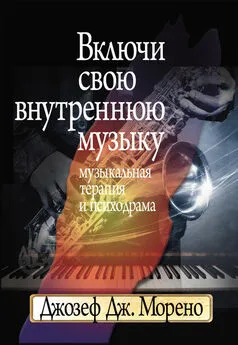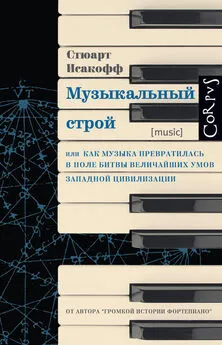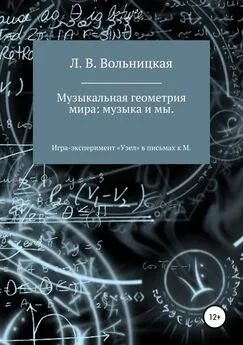Филип Болл - Музыкальный инстинкт. Почему мы любим музыку
- Название:Музыкальный инстинкт. Почему мы любим музыку
- Автор:
- Жанр:
- Издательство:Литагент 5 редакция
- Год:2021
- Город:Москва
- ISBN:978-5-04-113519-5
- Рейтинг:
- Избранное:Добавить в избранное
-
Отзывы:
-
Ваша оценка:
Филип Болл - Музыкальный инстинкт. Почему мы любим музыку краткое содержание
Музыкальный инстинкт. Почему мы любим музыку - читать онлайн бесплатно ознакомительный отрывок
Интервал:
Закладка:
Bregman, A. S. Auditory Scene Analysis: The Perceptual Organization of Sound. MIT Press, Cambridge, Ma., 1990.
Burkeman, O. ‘How many hits?’, Guardian Weekend 11 November 2006, 55—61.
Callender, C., Quinn, I. and Tymoczko, D. ‘Generalized voice-leading spaces’, Science 320, 346—8 (2008).
Carroll, J. ‘Steven Pinker’s Cheesecake for the Mind’, Philosophy and Literature 22, 478—85 (1998).
Castellano, M. A., Bharucha, J. J. and Krumhansl, C. L. ‘Tonal hierarchies in the music of North India’, Journal of Experimental Psychology: General 113, 394—41 (1984).
Chen, J. L., Perhune, V. B. and Zatorre, R. J. ‘Listening to musical rhythms recruits motor regions of the brain’, Cerebral Cortex 18, 2844—54 (2008).
Chen, J. L., Zatorre, R. J. and Penhune, V. B. ‘Interactions between auditory and dorsal premotor cortex during synchronization to musical rhythms’, Neuroimage 32, 1771—81 (2006).
Clark, S. and Rehding, A. (eds). Music Theory and Natural Order from the Renaissance to the Early Twentieth Century. Cambridge University Press, Cambridge, 2001.
Clarke, E. F. ‘Subject-position and the specification of invariants in music by Frank Zappa and P. J. Harvey’, Music Analysis 18, 347—74 (1999).
Clarke, E. F. ‘Structure and expression in rhythmic performance’, in Musical Structure and Cognition, ed. P. Howell, I. Cross and R. West, 209—36. Academic Press, London, 1985.
Cogan, R. New Images of Musical Sound. Harvard University Press, Cambridge, Ma., 1984.
Cohen, D. ‘Palestrina counterpoint: A musical expression of unexcited speech’, Journal of Music Theory 15, 85—111 (1971).
Cole, H. Sounds and Signs: Aspects of Musical Notation. Oxford University Press, Oxford, 1974.
Conard, N. J., Malina, M. and Münzel, S. C. ‘New flutes document the earliest musical tradition in southwestern Germany’, Nature 460, 737—40 (2009).
Cook, N. ‘The perception of large-scale tonal structure’, Music Perception 5, 197—206 (1987).
Cook, N. and Everist, M. Rethinking Music. Oxford University Press, Oxford, 1999.
Cooke, D. The Language of Music. Oxford University Press, Oxford, 1959.
Cooper, G. W. and Meyer, L. B. The Rhythmic Structure of Music. University of Chicago Press, Chicago, 1960.
Copland, A. What To Listen For in Music. McGraw-Hill, New York, 1957.
Critchley, M. and Henson, R. A. (eds). Music and the Brain. Heinemann, London, 1977.
Cross, I. ‘Music, cognition, culture and evolution’, Annals of the New York Academy of Sciences 930, 28—42 (2001).
Cross, I. ‘Bach in mind’, Understanding Bach 2; available online only at http://www.bachnetwork.co.uk/ub2_contents.html (2007).
Cuddy, L. L. and Lunney, C. A. ‘Expectancies generated by melodic intervals: perceptual judgements of melodic continuity’, Perception & Psychophysics 57, 451—62 (1995).
Dalla Bella, S. and Peretz, I. ‘Differentiation of classical music requires little learning but rhythm’, Cognition 96, B65–B78 (2005).
Darwin, C. The Descent of Man, ed. J. Moore and A. Desmond. Penguin, London, 2004.
Davies, J. B. The Psychology of Music. Hutchinson, London, 1978.
Davies, S. Musical Meaning and Expression. Cornell University Press, New York, 1994.
Davies, S. ‘The expression of emotion in music’, Mind 89, 67—86 (1980).
Davies, S. ‘Profundity in instrumental music’, British Journal of Aesthetics 42, 343—56 (2002).
Davies, S. Themes in the Philosophy of Music. Clarendon Press, Oxford, 2005.
Deliège, I. ‘A perceptual approach to contemporary musical forms’, Contemporary Music Review 4, 213—30 (1989).
Deliège, I. and El Ahmadi, A. ‘Mechanism of cue extraction in musical groupings: a study of perception on Sequenza VI for viola solo by Luciano Berio’, Psychology of Music 18 (1), 18—44 (1990).
Deliège, I., Mélen, M., Stammers, D. and Cross, I. ‘Music schemata in real-time listening to a piece of music’, Music Perception 14, 117—60 (1996).
Deliège, I. and Sloboda, J. A. (eds). Perception and Cognition of Music. Psychology Press, Hove, 1997.
Deutsch, D. and Feroe, J. ‘The internal representation of pitch sequences in tonal music’, Psychology Review 86, 503—22 (1981).
Deutsch, D. (ed.) The Psychology of Music. Academic Press, London, 1982.
Deutsch, D., Henthorn, T., Marvin, E. and Xu, H. – S., ‘Absolute pitch among American and Chinese conservatory students: prevalence differences, and evidence for a speech-related critical period’, Journal of the Acoustical Society of America 119, 719—22 (2006).
Deutsch, D., Dooley, K., Henthorn, T. and Head, B. ‘Absolute pitch among students in an American conservatory: association with tone language fluency’, Journal of the Acoustical Society of America 125, 2398—403 (2009).
Dibben, N. ‘The cognitive reality of hierarchic structure in tonal and atonal music’, Music Perception 12, 1—25 (1994).
Donington, R. The Interpretation of Early Music. Faber & Faber, London, 1963.
Dowling, W. J. ‘Scale and contour: two components of a theory of memory for melodies’, Psychological Review 85, 342—54 (1978).
Dowling, W. J. and Harwood, D. L. Musical Cognition. Academic Press, London, 1986.
Duffin, R. W. How Equal Temperament Ruined Harmony (and Why You Should Care). W. W. Norton, New York, 2007.
Edwards, P. ‘A suggestion for simplified musical notation’, Journal of the Acoustical Society of America 11, 323 (1940).
Eerola, T. and North, A. C. ‘Expectancy-based model of melodic complexity’, in Proceedings of the 6th International Conference of Music Perception and Cognition (Keele University, August 2000), ed. Woods, C., Luck, G., Brochard, R., Seddon, F. and Sloboda, J. Keele University, 2000.
Fauvel, J., Flood, R. and Wilson, R. Music and Mathematics: From Pythagoras to Fractals. Oxford University Press, Oxford, 2003.
Fedorenko, E., Patel, A.D., Casasanto, D., Winawer, J. and Gibson, E. ‘Structural integration in language and music: evidence for a shared system’, Memory & Cognition 37, 1—9 (2009).
Fitch, W. T. ‘On the biology and evolution of music’, Music Cognition 10, 85—8 (2006).
Fitch, W. T. and Rosenfeld, A. J. ‘Perception and production of syncopated rhythms’, Music Perception 25, 43—58 (2007).
Forte, A. Tonal Harmony in Concept and Practice. Holt, Rinehart & Winston, New York, 1962.
Forte, A. The Structure of Atonal Music. Yale University Press, New Haven, 1973.
Forte, A. and Gilbert, S. E. Introduction to Schenkerian Analysis. W. W. Norton, New York, 1982.
Francès, R. La Perception de la Musique. Vrin, Paris, 1958.
Fritz, T. et al. ‘Universal recognition of three basic emotions in music’, Current Biology 19, 1—4 (2009).
Gabriel, C. ‘An experimental study of Deryck Cooke’s theory of music and meaning’, Psychology of Music 6 (1), 13—20 (1978).
Gaser, C. and Schlaug, G. ‘Brain structures differ between musicians and non-musicians’, Journal of Neuroscience 23, 9240—5 (2003).
Gjerdingen, R. ‘The psychology of music’, in The Cambridge History of Western Music, ed. T. Christensen, 956—81. Cambridge University Press, Cambridge, 2002.
Gjerdingen, R. ‘Leonard B. Meyer’, Empirical Musicology Review 3, 2—3 (2008).
Gosselin, N. et al. ‘Impaired recognition of scary music following unilateral temporal lobe excision’, Brain 128, 628—40 (2005).
Grant, M. J. Serial Music, Serial Aesthetics. Cambridge University Press, Cambridge, 2001.
Gregory, A. H. and Varney, N. ‘Cross-cultural comparisons in the affective response to music’, Psychology of Music 24, 47—52 (1996).
Grey, J. An Exploration of Musical Timbre. PhD thesis, Stanford University, California, 1975.
Grey, J. ‘Multidimensional perceptual scaling of musical timbres’, Journal of the Acoustical Society of America 61, 1270—7 (1977).
Grout, D. J. A History of Western Music, revised edn. J. M. Dent & Sons, London, 1960.
Hanslick, E. The Beautiful in Music, transl. G. Cohen. Novello, Ewer & Co., London, 1891.
Hargreaves, J. R. ‘The effects of repetition on liking for music’, Music Education 32, 35—47 (1984).
Hatten, R. Musical Meaning in Beethoven. Indiana University Press, Bloomington, 1994.
Hindemith, P. A Composer’s World. Anchor, Garden City, New York, 1961.
Ho, L. – T. ‘On Chinese scales and national modes’, Asian Music 14, 132—54 (1983).
Hodeir, A. Jazz: Its Evolution and Essence, transl. D. Noakes. Secker & Warburg, London, 1956.
Howell, P., Cross, I. and West, R. (eds). Musical Structure and Cognition. Academic Press, London, 1985.
Huron, D. ‘The melodic arch in Western folksongs’, Computing in Musicology 10, 3—23 (1996).
Huron, D. ‘The avoidance of part-crossing in polyphonic music: perceptual evidence and musical practice’, Music Perception 9, 93—104 (1991).
Huron, D. ‘Tonal consonance versus tonal fusion in polyphonic sonorities’, Music Perception 9, 135—54 (1991).
Huron, D. ‘Tone and voice: a derivation for the rules of voice-leading from perceptual principles’, Music Perception 19, 1—64 (2001).
Huron, D. Sweet Anticipation: Music and the Psychology of Expectation. MIT Press, Cambridge, Ma., 2006.
Huron, D. ‘Lost in music’, Nature 453, 456—7 (2008).
Huron, D. ‘Asynchronous preparation of tonally fused intervals in polyphonic music’, Empirical Musicology Review 3, 11—21 (2008).
Huron, D. and Veltman, J. ‘A cognitive approach to medieval mode: evidence for an historical antecedent to the major/minor system’, Empirical Musicology Review 1, 33—55 (2006).
Iverson, P. and Krumhansl, C. L. ‘Isolating the dynamic attributes of musical timbre’, Journal of the Acoustical Society of America 94, 2595—603 (1993).
Iversen, J. R., Patel, A. D. and Ohgushi, K. ‘Perception of rhythmic grouping depends on auditory experience’, Journal of the Acoustical Society of America 124, 2263—71 (2008).
Jackendoff, R. Review of Leonard Bernstein’s ‘The Unanswered Question’, Language 53, 883—94 (1977).
Jackendoff, R. and Lerdahl, F. ‘The capacity for music: what is it, and what’s special about it?’, Cognition 100, 33—72 (2006).
Jairazbhoy, N. A. The ragas of North Indian Music: Their Structure and Evolution. Faber & Faber, London, 1971.
Janata, P. ‘Brain electrical activity evoked by mental formation of auditory expectations and images’, Brain Topography 13, 169—93 (2001).
Janata, P., Birk, J. L., Van Horn, J. D., Leman, M., Tillmann, B. and Bharucha, J. J. ‘The cortical topography of tonal structures underlying Western music’, Science 298, 2167—70 (2003).
Jennings, H. D., Ivanov, P. Ch., Martins, A. M., da Silva, P. C. and Viswanathan, G. M. ‘Variance fluctuations in nonstationary time series: a comparative study of music genres’, Physica A 336, 585—94 (2004).
Jones, M. R. and Holleran, S. (eds). Cognitive Bases of Musical Communication. American Psychological Association, Washington, DC, 1992.
Juslin, P. N. and Laukka, P. ‘Communication of emotions in vocal expression and music performance: Different channels, same code?’, Psychological Bulletin 129, 770—814 (2003).
Juslin, P. N. and Laukka, P. ‘Expression, perception, and induction of musical emotions: a review and questionnaire study of everyday listening’, Journal of New Musical Research 33, 217—38 (2004).
Juslin, P. N. and Sloboda, J. A. (eds). Music and Emotion. Oxford University Press, Oxford, 2001.
Juslin, P. N. and Västfjäll, D. ‘Emotional responses to music: the need to consider underlying mechanisms’, Behavioral and Brain Sciences 31, 559—75 (2008).
Читать дальшеИнтервал:
Закладка:










